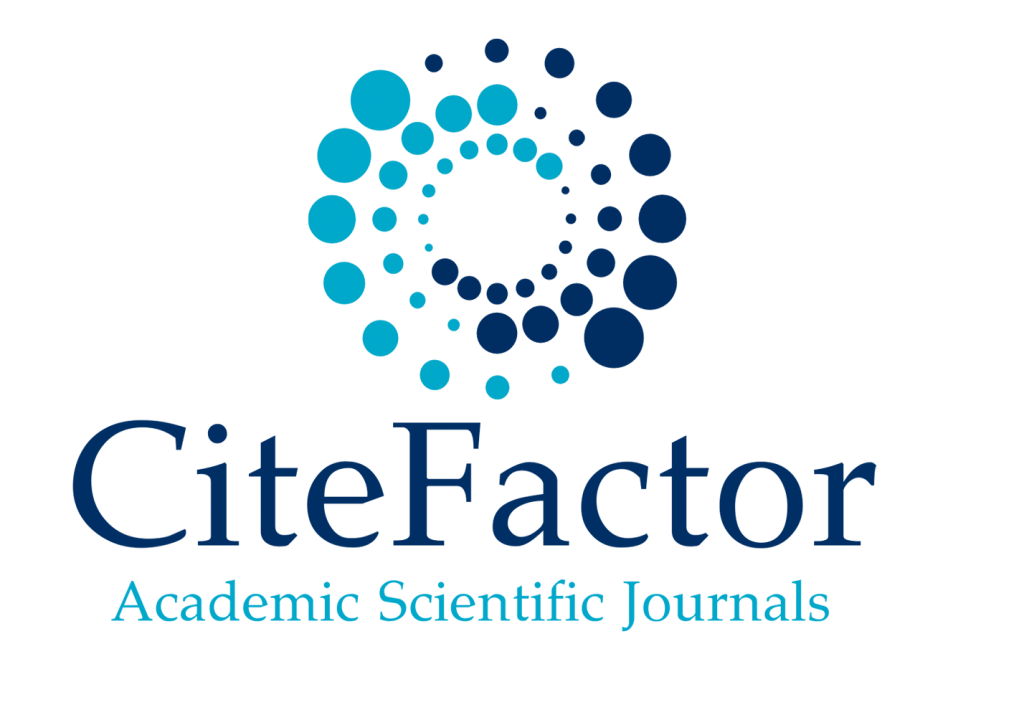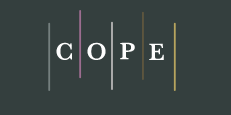Demand for Consumer Health Information and Sustainable Health in Uasin Gishu County, Kenya
1Judy Njeri Karani, 2James Onyango, 3Hillary Ndambiri
1,2,3Department of Economics, Moi University
https://doi.org/10.47191/jefms/v8-i2-25ABSTRACT:
Sustainable health is one of the key factors of production in an economy. Vibrant global endeavour towards attainment of sustainable health as a means of achieving greater heights in economic growth and development emphasize the importance of consumer health information. However, the influence of the demand for consumer health information on sustainable health remains unclear. The primary objective of this study was to analyze the effect of demand for consumer health information on sustainable health in Uasin Gishu County, Kenya. The specific objectives were: to evaluate the effect of prices of substitutes in consumer health information, the prices of complements of consumer health information, income level of households and expected future prices of consumer health information and their complements on sustainable health. The study was pegged on human capital theory, the theory of consumer choice and rational choice theory which provided the specification framework. A sample size of 399 households was used based on 304,943 households. The study is explanatory in design. Structured questionnaires were distributed to the head of households using random sampling, to collect data. The findings of the study indicated that prices of substitutes in consumer health information, income level of households and expected future prices of substitutes in consumer health information and their complements had a positive and significant effect on sustainable health, while complements of consumer health information were found to have a positive but insignificant effect on sustainable health. The study recommends that, policies should aim at regulating the prices of substitutes in consumer health information, reduce income inequality and increasing disposable income of lower-income households, stabilize prices by ensuring that prices remain predictable and affordable for sustainable health practices, and facilitate correct and prompt health decisions. The effects of Prices of complements of consumer health information although less significant, should be looked more in to.
KEYWORDS:
demand for consumer health information, sustainable health, utility, labour productivity, consumer choice, consumer behaviour, consumption of consumer health information
REFERENCES:
1) Abdullahi, A. (2011). Trends and challenges of traditional medicine in Africa. African Journal of Traditional, Complementary and Alternative Medicines, 8(5S). https://doi.org/10.4314/ajtcam.v8i5s.5
2) Abebe, R., Hill, S., Vaughan, J. W., Small, P. M., & Shwartz, H. A. (2019). Using Search Queries to Understand Health Information Needs in Africa [Conference session]. Proceedings of the International AAAI Conference on Web and Social Media, 13(01),3-14.Retrievedfrom; https://ojs.aaai.org/index.php/ICWSM/article/view/3360
3) Abell, P. (2000). Sociological theory and rational choice theory. The blackwell companion to social theory, 2, 223-44.
4) Acharya, S., Lin, V., & Dhingra, N. (2018). The role of health in achieving the sustainable development goals. Bulletin of the World Health Organization, 96(9), 591.
5) Adeola, O., & Evans, O. (2018). Digital health: ICT and health in Africa. Aktual'ni Problemy Ekonomiky= Actual Problems in Economics, (208), 66-83. Retrieved from; https://www.researchgate.net/publication/331407717_Digital_health_ICT_and_health_in_Africa
6) Afshin, A., Penalvo, J. L., Del Gobbo, L., Silva, J., Michaelson, M., O'Flaherty, M., ... & Mozaffarian, D. (2017). The prospective impact of food pricing on improving dietary consumption: a systematic review and meta-analysis. PloS one, 12(3), e0172277.
7) Aguinis, H. (2004). Regression analysis for categorical moderators. Guilford Press.
8) Ahmed, S., Ahmed, M. W., Hasan, M. Z., Mehdi, G. G., Islam, Z., Rehnberg, C., ... & Khan, J. A. (2022). Assessing the incidence of catastrophic health expenditure and impoverishment from out-of-pocket payments and their determinants in Bangladesh: evidence from the nationwide Household Income and Expenditure Survey 2016. International health, 14(1), 84-96.
9) Ajayi, Victor Oluwatosin. "Primary sources of data and secondary sources of data." Benue State University 1.1 (2017): 1-6.
10) Ajuwon, G. A., Kamau, N., Kinyengyere, A., & Muziringa, M. (2017). Consumer health information literacy promotion program in public and community libraries in Africa: Experience from Kenya, Nigeria, Uganda, and Zimbabwe. Journal of Consumer Health on the Internet, 21(4), 350-368. https://doi.org/10.1080/15398285.2017.1376180
11) Ajwang, N. W. O. (2023). Factors that Influence Household Access to Healthcare Services in Eldoret Municipality, Kenya. Open Journal of Social Sciences, 11(2), 140-158.
12) Akhtar, K., Akhtar, S., Fahd, S., & Ajmal, I. (2022). Electronic Health (e-health) Literacy among Undergraduate University Students. Library Philosophy and Practice, 1-15. Retrieved from; https://www.proquest.com/openview/5b71941b780cc66f9c47a3fe8d5b318c/1?pq-origsite=gscholar&cbl=54903
13) Akter, S., & Ray, P. (2010). mHealth-an ultimate platform to serve the unserved. Yearbook of medical informatics, 19(01), 94-100.
14) Akuoko, C. P., Armah, E., Sarpong, T., Quansah, D. Y., Amankwaa, I., & Boateng, D. (2017). Barriers to early presentation and diagnosis of breast cancer among African women living in sub-Saharan Africa. PloS one, 12(2), e0171024
15) Akwala, A. O. (2022). Digital Medical Care: Securing Mothers' Lives in Rural Kenya Through Mobile Phone Applications. In Research Anthology on Advancements in Women's Health and Reproductive Rights (pp. 501-514). IGI Global.
16) Alabi, V. A. (2017). Research design: research paradigms, population, sample along with sampling techniques and design types. Perspectives on conducting and reporting research in the humanities.
17) Alin, A. (2010). Multicollinearity. Wiley interdisciplinary reviews: computational statistics, 2(3), 370-374.
18) Altice, C. K., Banegas, M. P., Tucker-Seeley, R. D., & Yabroff, K. R. (2017). Financial hardships experienced by cancer survivors: a systematic review. Journal of the National Cancer Institute, 109(2), djw205.
19) Altun, İ., Erkek, Y., Demirhan, Y., Peker, A., & Çetinarslan, B. (2014). Hygiene behavior in persons with type 2 diabetes. American Journal of Infection Control, 42(7), 817-818. https://doi.org/10.1016/j.ajic.2014.03.010
20) Amiri, M. M., Kazemian, M., Motaghed, Z., & Abdi, Z. (2021). Systematic review of factors determining health care expenditures. Health Policy and Technology, 10(2), 100498.
21) Anstey Watkins, J. O., Goudge, J., Gómez-Olivé, F. X., & Griffiths, F. (2018). Mobile phone use among patients and health workers to enhance primary healthcare: A qualitative study in rural South Africa. Social Science & Medicine, 198, 139-147. https://doi.org/10.1016/j.socscimed.2018.01.011
22) Araiza-Aguilar, J. A., Rojas-Valencia, M. N., & Aguilar-Vera, R. A. (2020). Forecast generation model of municipal solid waste using multiple linear regression. Global Journal of Environmental Science and Management, 6(1), 1-14.
23) Arthur, E., & Oaikhenan, H. E. (2017). The effects of health expenditure on health outcomes in Sub‐Saharan Africa (SSA). African Development Review, 29(3), 524-536.
24) Aswani, D. R. (2021). Perceptions towards Government Communication Strategies on COVID-19 Vaccination in Kenya. Asian Journal of Humanities and Social Studies (ISSN: 2321-2799), 9(5).
25) Audibert, M., Motel, P. C., & Drabo, A. (2011). Global burden of disease and economic growth. https://halshs.archives-ouvertes.fr/halshs-00551770/
26) Awuor, R. J. (2013). Health Information Seeking-behaviors Among Women Who Use the Internet; a Case Study of the Road Authorities in Nairobi, Kenya . (Doctoral dissertation, University of Nairobi). http://41.204.161.209/
27) Azzani, M., Roslani, A. C., & Su, T. T. (2019). Determinants of Household Catastrophic Health Expenditure: A Systematic Review. Malays J Med Sci. 2019, 26(1), 15–43.. https://doi.org/ 10.21315/mjms2019.26.1.3
28) Babaioff, M., Blumrosen, L., & Nisan, N. (2017). Selling complementary goods: Dynamics, efficiency and revenue. arXiv preprint arXiv:1706.00219.
29) Babalola, O. (2017). Consumers and their demand for healthcare. Journal of Health & Medical Economics, 3(1), 6.
30) Bach, R. L., & Wenz, A. (2020). Studying health-related internet and mobile device use using web logs and smartphone records. PLOS ONE, 15(6), e0234663. https://doi.org/10.1371/journal.pone.0234663
31) Baker, L., Wagner, T. H., Singer, S., & Bundorf, M. K. (2003). Use of the Internet and e-mail for health care information: results from a national survey. Jama, 289(18), 2400-2406.
32) Barasa, E. W., Maina, T., & Ravishankar, N. (2017). Assessing the impoverishing effects, and factors associated with the incidence of catastrophic health care payments in Kenya. International journal for equity in health, 16(1), 1-14.
33) Baron-Epel, O., Kaplan, G., Haviv-Messika, A., Tarabeia, J., Green, M. S., & Kaluski, D. N. (2005). Self-reported health as a cultural health determinant in Arab and Jewish Israelis: MABAT—National Health and Nutrition Survey 1999–2001. Social science & medicine, 61(6), 1256-1266.
34) Becker, G. S. (1976). The economic approach to human behavior (Vol. 803). University of Chicago press.
35) Benítez, S. O., Lozano-Olvera, G., Morelos, R. A., & de Vega, C. A. (2008). Mathematical modeling to predict residential solid waste generation. Waste Management, 28, S7-S13.
36) Bentouhami, H., Casas, L., & Weyler, J. (2021). Reporting of “theoretical design” in explanatory research: A critical appraisal of research on early life exposure to antibiotics and the occurrence of asthma. Clinical Epidemiology, 755-767.
37) Benvenuto, M., Sambati, F. V., & Viola, C. (2019, May). The Impact of Internet Usage on Health-Care Expenditures and Sustainability. In Proceedings of the 5th International Scientific Conference ERAZ—Knowledge Based Sustainable Development, Budapest, Hungary (pp. 95-107).
38) Bidmon, S., & Terlutter, R. (2015). Gender differences in searching for health information on the internet and the virtual patient-physician relationship in Germany: Exploratory results on how men and women differ and why. Journal of Medical Internet Research, 17(6), e156. https://doi.org/10.2196/jmir.4127
39) Bigdeli, M., Jacobs, B., Tomson, G., Laing, R., Ghaffar, A., Dujardin, B., & Van Damme, W. (2013). Access to medicines from a health system perspective. Health policy and planning, 28(7), 692-704.
40) Bloom, D. E., & Finlay, J. E. (2009). Demographic change and economic growth in Asia. Asian Economic Policy Review, 4(1), 45-64. Retrieved from; https://onlinelibrary.wiley.com/doi/abs/10.1111/j.1748-3131.2009.01106.x
41) Boyce, W. T., Levitt, P., Martinez, F. D., McEwen, B. S., & Shonkoff, J. P. (2021). Genes, environments, and time: the biology of adversity and resilience. Pediatrics, 147(2).
42) Braveman, P., Egerter, S., & Williams, D. R. (2011). The social determinants of health: coming of age. Annual review of public health, 32(1), 381-398
43) Breton, T. R. (2014). A Human Capital Theory of Growth: New Evidence for an Old Idea. Center for Research in Economics and Finance (CIEF), Working Paper, (14-13).
44) Brown, K. (2019). Examining Economic Development Trends in Kenya. Available at SSRN 3423349. Retrieved from; https://papers.ssrn.com/sol3/papers
45) Browning, E. K., & Zupan, M. A. (2020). Microeconomics: Theory and applications. John Wiley & Sons
46) Brue, S. L., & Grant, R. R. (2019). The evolution of economic thought. https://books.google.co.ke/books
47) Buigut, S., Ettarh, R., & Amendah, D. D. (2015). Catastrophic health expenditure and its determinants in Kenya slum communities. International journal for equity in health, 14(1), 1-12.
48) Bujnowska-Fedak, M. M. (2015). Trends in the use of the internet for health purposes in Poland. BMC Public Health, 15(1). https://doi.org/10.1186/s12889-015-1473-3
49) Bundorf, M. K., Wagner, T. H., Singer, S. J., & Baker, L. C. (2006). Who searches the internet for health information?. Health services research, 41(3p1), 819-836.
50) Bundorf, M. K., Baker, L., Singer, S., & Wagner, T. (2004). Consumer demand for health information on the internet. https://doi.org/10.3386/w10386
51) Buse, K., & Hawkes, S. (2015). Health in the sustainable development goals: Ready for a paradigm shift? Globalization and Health, 11(1). https://doi.org/10.1186/s12992-015-0098-8
52) Capatina, E. (2015). Life-cycle effects of health risk. Journal of Monetary Economics, 74, 67-88. https://doi.org/10.1016/j.jmoneco.2015.06.002
53) Cardona-Arias, J. A. (2023). Synthesis of qualitative evidence on malaria in pregnancy, 2005–2022: a systematic review. Tropical Medicine and Infectious Disease, 8(4), 235.
54) Cepal, N. (2018). The 2030 agenda and the sustainable development goals: An opportunity for Latin America and the Caribbean. https://repositorio.cepal.org/handle/11362/40156.4
55) Cheah, Y. K., Goh, K. L., & Abdul Adzis, A. (2021). Sociodemographic determinants of health care expenditure: micro level evidence of a fast-growing developing country. International Journal of Social Economics, 48(4), 640-656.
56) Chebii, W. K., Muthee, J. K., & Kiemo, J. K. (2022). Traditional medicine trade and uses in the surveyed medicine markets of Western Kenya. African Health Sciences, 4(4), 695-703.
57) Chen, A. T. (2012). Exploring online support spaces: Using cluster analysis to examine breast cancer, diabetes and fibromyalgia support groups. Patient Education and Counseling, 87(2), 250-257. https://doi.org/10.1016/j.pec.2011.08.017
58) Cheung, A. K. L. (2021). Structured questionnaires. In Encyclopedia of quality of life and well-being research (pp. 1-3). Cham: Springer International Publishing.
59) Ciarreta, A., Espinosa, M. P., & Pizarro-Irizar, C. (2023). Pricing policies for efficient demand side management in liberalized electricity markets. Economic Modelling, 121, 106215.
60) Coglianese, J., Davis, L. W., Kilian, L., & Stock, J. H. (2017). Anticipation, tax avoidance, and the price elasticity of gasoline demand. Journal of Applied Econometrics, 32(1), 1-15.
61) Cohen, D., & Flood, C. (2022). Health economics. In Health Studies (pp. 269-294). Palgrave Macmillan, Singapore.
62) Cole, M. B., & Nguyen, K. H. (2020). Unmet social needs among low‐income adults in the United States: Associations with health care access and quality. Health services research, 55, 873-882
63) Cornish, H., Walls, H., Ndirangu, R., Ogbureke, N., Bah, O. M., Tom-Kargbo, J. F., ... & Ranganathan, M. (2021). Women’s economic empowerment and health related decision-making in rural Sierra Leone. Culture, health & sexuality, 23(1), 19-36.
64) Coto-Millán, P. (2003). Theory of utility and consumer behaviour: A comprehensive review of concepts, properties and the most significant theorems. Contributions to Economics, 7-23. https://doi.org/10.1007/978-3-642-57330-9_2
65) County Government of Uasin Gishu (2019), the county treasury, County fiscal strategy paper (CFSP) 2019, Transformational development process for shared property
66) County Government of Uasin Gishu (2024), the county treasury, County fiscal strategy paper (CFSP) 2024, Transformational development process for shared property
67) Currie, J. (2009). Healthy, wealthy, and wise: Socioeconomic status, poor health in childhood, and human capital development. Journal of economic literature, 47(1), 87-122.
68) De Mooij, M. (2019). Consumer behavior and culture: Consequences for global marketing and advertising. Sage.
69) Deering, M. J., & Harris, J. (1996). Consumer health information demand and delivery: implications for libraries. Bulletin of the Medical Library Association, 84(2), 209.
70) DeLorme, D. E., Huh, J., Reid, L. N., & An, S. (2010). The state of public research on over‐the‐counter drug advertising. International Journal of Pharmaceutical and Healthcare Marketing, 4(3), 208-231
71) Duncan, S., & Fiske, D. W. (2015). Face-to-face interaction: Research, methods, and theory. Routledge.
72) Dwyer, D. S., & Liu, H. (2013). The impact of consumer health information on the demand for health services. The Quarterly Review of Economics and Finance, 53(1), 1-11. https://doi.org/10.1016/j.qref.2012.11.002
73) Economic Growth in Kenya. Journal of Economics, Finance and Business Analytics, 1(2), 66-76.
74) Edo, S., Okodua, H., & Odebiyi, J. (2019). Internet adoption and financial development in subsaharan Africa: Evidence from Nigeria and Kenya. African Development Review, 31(1), 144-160. https://doi.org/10.1111/1467-8268.12370
75) Ekor, M. (2014). The growing use of herbal medicines: issues relating to adverse reactions and challenges in monitoring safety. Frontiers in pharmacology, 4, 66193.
76) El Sherif, R., Pluye, P., Thoër, C., & Rodriguez, C. (2018). Reducing negative outcomes of online consumer health information: Qualitative interpretive study with clinicians, librarians, and consumers. Journal of Medical Internet Research, 20(5), e169. https://doi.org/10.2196/jmir.9326
77) Elster, J. (1989). Solomonic judgements: Studies in the limitation of rationality. Cambridge University Press.
78) Engelhardt, M. A. (2017). Hitching healthcare to the chain: An introduction to blockchain technology in the healthcare sector. Technology Innovation Management Review, 7(10), 22-34. https://doi.org/10.22215/timreview/1111
79) Erdem, T., Katz, M. L., & Sun, B. (2010). A simple test for distinguishing between internal reference price theories. Quantitative Marketing and Economics, 8, 303-332.
80) Essue, B., Laba, T. L., Knaul, F., Chu, A., Minh, H., Nguyen, T. K. P., & Jan, S. (2018). Economic Burden of Chronic Ill-Health and Injuries for Households in Low-and Middle-Income Countries. Disease control priorities: improving health and reducing poverty.
81) Everest, G., Marshall, L., Fraser, C., & Briggs, A. (2022). Addressing the leading risk factors for ill health. The Health Foundation. Accessed, 1.
82) Ezoji, A., Arani, A. A., Vaez Mahdavi, M. R., & Jahangard, E. (2019). The impact of human capital (health and education) on labor productivity; a composite model approach-a case study of Iran. Iranian economic review, 23(2), 373-397.
83) Fadhilah, N. M., Fauziah, S., Riana, D., Eko, A., Yulianto, A., & Sulthon, B. M. (2020). Influence of overload information about COVID-19 pandemic on internet for psychological illnesses and behavioral intentions to continue searching for information. Journal of Physics: Conference Series, 1641(1), 012018. https://doi.org/10.1088/1742-6596/1641/1/012018
84) Fayoyin, A. (2016). Engaging social media for health communication in Africa: approaches, results and lessons. Journal of Mass Communication & Journalism, 6(6), 315-321.
















